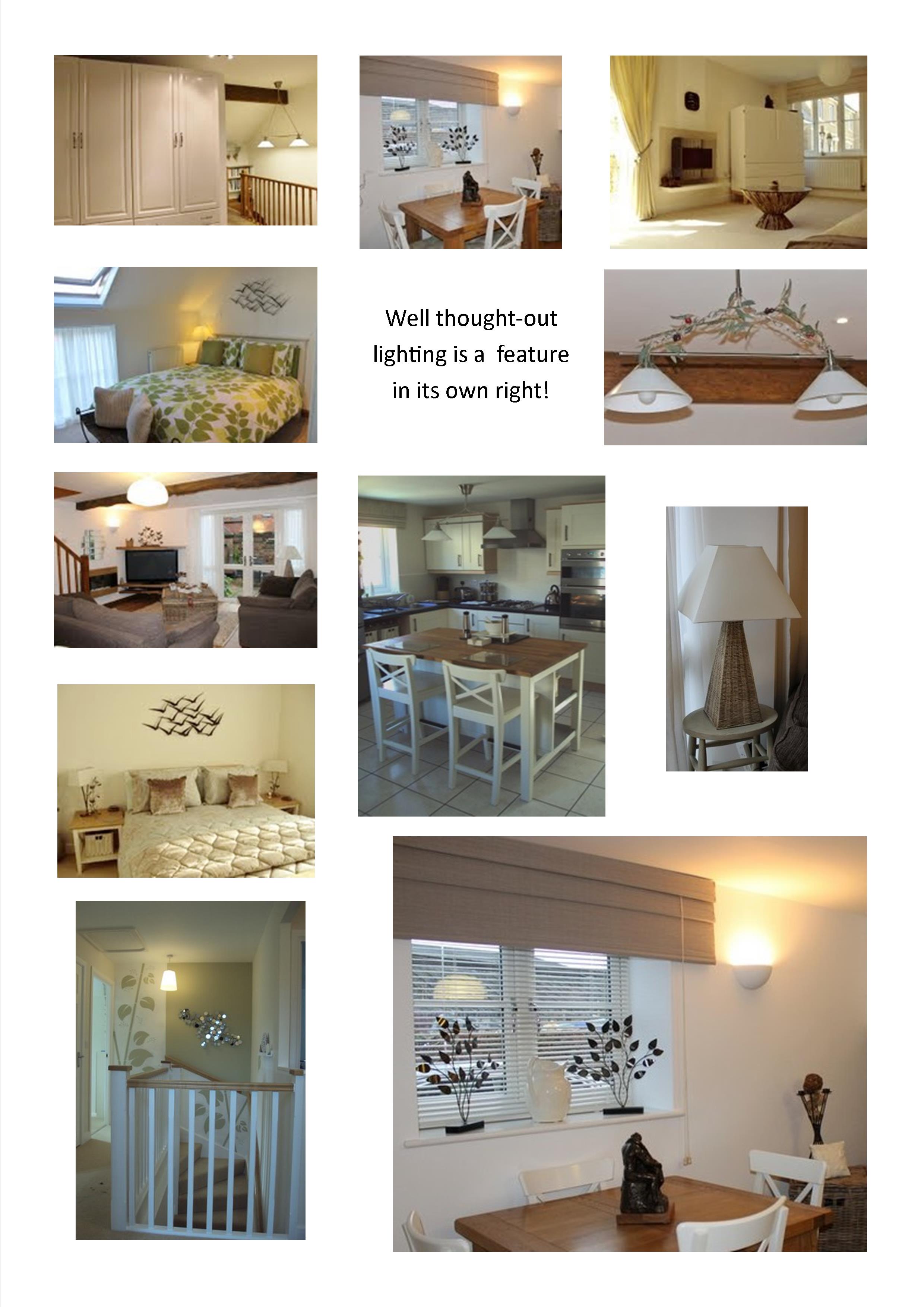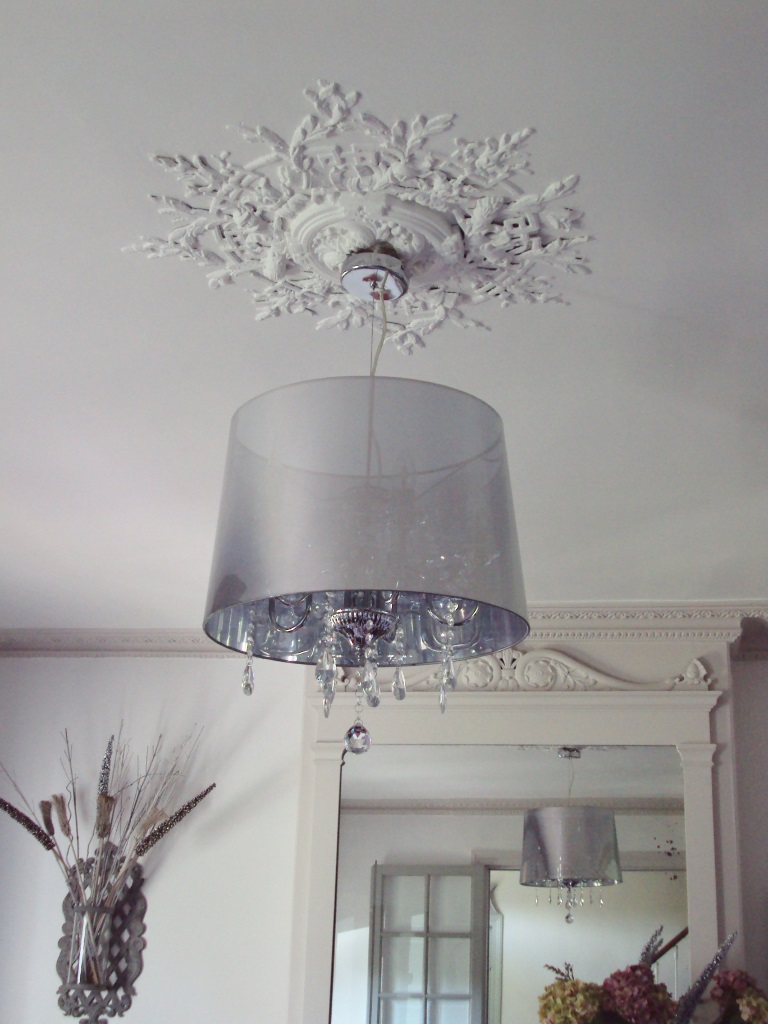‘Livin’ and lovin’ life 101′ newsletter – penned by a borderline OCD candidate who LOVED designing interiors, but happens to write psychic romance now instead. I love to be surrounded by beautiful things that don’t cost the earth. Why? Because we keep moving house and each time leave most of the contents behind… but that’s the whole point – each house inspires its own style and that should be unique. Life is also too short to be cleaning all the time – so shortcuts are my thing. Did I mention I’m a Gemini?
My life rules:
Home – MUST be easy to clean and look good with minimal effort
Ambience – MUST create an inspiring setting in which to live and write
Life – MUST spend time enjoying what I do: minimise time doing the boring, but necessary
Newsletter no. 3 – light it up…

I hate shopping for clothes, shoes, bags…but I LOVE shopping for interiors. Light fittings are so important and I often see beautifully decorated rooms where the lighting solutions appear to be an afterthought. Now that’s rather like going out and buying an expensive outfit for a wedding, then as you walk out of the door you realise you don’t have a hat…so you grab some old thing from the cupboard. No, no, no, no, no – I think you get the message. Do the shop test and handle the goods, check out the weight and the quality. If it isn’t well made, it isn’t going to look good.
So what are my basic tips? There are four things you have to consider before you hand over your credit card:
PROPORTION APPROPRIATENESS COLOUR AMBIENCE
…In that order, and notice I haven’t mentioned price. I do not believe in spending a fortune on lighting. These days there are so many good stores stocking a wide range of budget fittings, fixtures and shades. However, QUALITY is another matter.
Buying something that is good value for money means that you aren’t paying for that expensive label, BUT you want something that is fit for purpose and isn’t flimsy. If you have children, or a clumsy partner, don’t buy glass table lamps, buy wooden ones. If it tips over as you go to pick it up in the store, or it buckles in your hands – some shades are so thin these days they would crease before you managed to get them home – don’t buy it!
1. Proportion – if you have a big room you need a big light fitting. If you have a small room, you need a small fitting…so when you are out shopping BEFORE you leave the house decide upon the approximate SIZE (roughly, using a tape measure AND remember to pop it into your bag). That way you won’t end us saying ‘well it looked larger/smaller in the store…’.
2. Appropriateness – ornate crystal light fittings are fabulous and in the right setting, even in a small home (assuming the scale is right) it can be the main feature in the room. However, if your room is small, or has a lot of furniture/soft furnishings/ornaments in it, then you need something simple. You wouldn’t wear a patterned jacket over a heavily checked skirt – you would mix plain with patterned. The same principle applies. Also consider WHERE you want your lighting – uplighting, inset in the ceilings (in the kitchen say), or downlighters. The collage above gives some examples.

3. Colour – this can be a plus or a minus. If your room is fairly neutral, uncluttered and with fairly large pieces of furniture in it (as opposed to lots of smaller items etc) then grab that exciting colour. Choose a good shape/design, nothing too fussy and your room will zing! However, if you room is rather full and already has lots of texture/colour going on (even if it’s shades within one spectrum), then choose something that will disappear. Simple and plain is sometimes the answer. In the collage above you will notice two very simple, white paper shades. Different shapes but they are very effective.
4. Ambience – Sometimes the overhead light fitting is more of an ornament/design statement than a working feature. It can be quite a harsh light source, so often people will use the softer side lighting for a more ambient effect. If that’s the case, choose your overhead fitting using the other 3 main criteria and accept that your side lighting is going to be the main source of light. In that case those lights needs to be well-placed (particularly if anyone reads at night) and spaced around the room (two or three lights may be necessary). As that will mean side tables will also be required, ensure you take that into account and don’t overload the room with more than it can take. A room should be cosy, lived-in, but not so cluttered that you feel closed-in. The more items of furniture you have to accommodate, the simpler you need to keep the shape of the things you choose and avoid having lots of very small things. If you love collecting something, buy a display case to house the items. It will impact upon the room less than having them spread around.
The rules are simple and common sense, but how often have you thought about the SIZE of the fitting you are looking for before you leave the house. Then you stand in the store thinking ‘is that going to be the right size/shape?’. Do your homework first; stand back and really take in the detail of your room and imagine how different shapes will look. Make as many decisions as you can before you go shopping and then you won’t make the classic mistake of impulse buying. It’s not a problem if you are happy to traipse back to the store and change what you’ve purchased, but so many times I’ve heard people say ‘oh, I meant to change it and never got around to it.’
If you want to own up to your ‘bad shopping buys/habits’ and want to share…I’ll try my best not to laugh – promise! Happy interior designing…
